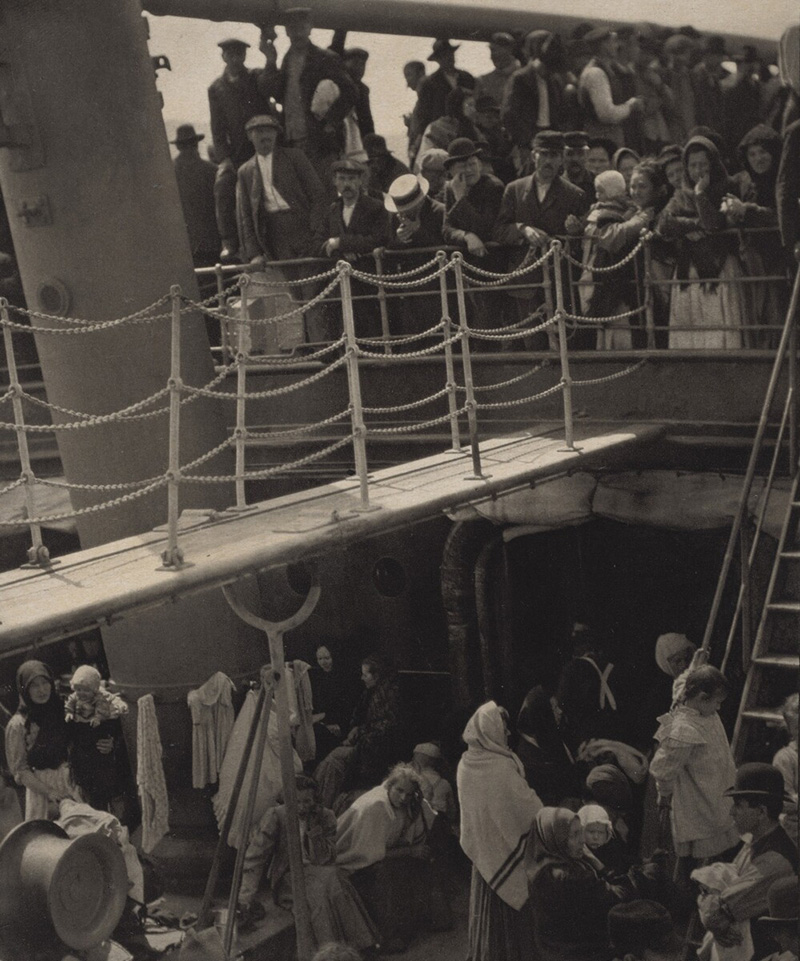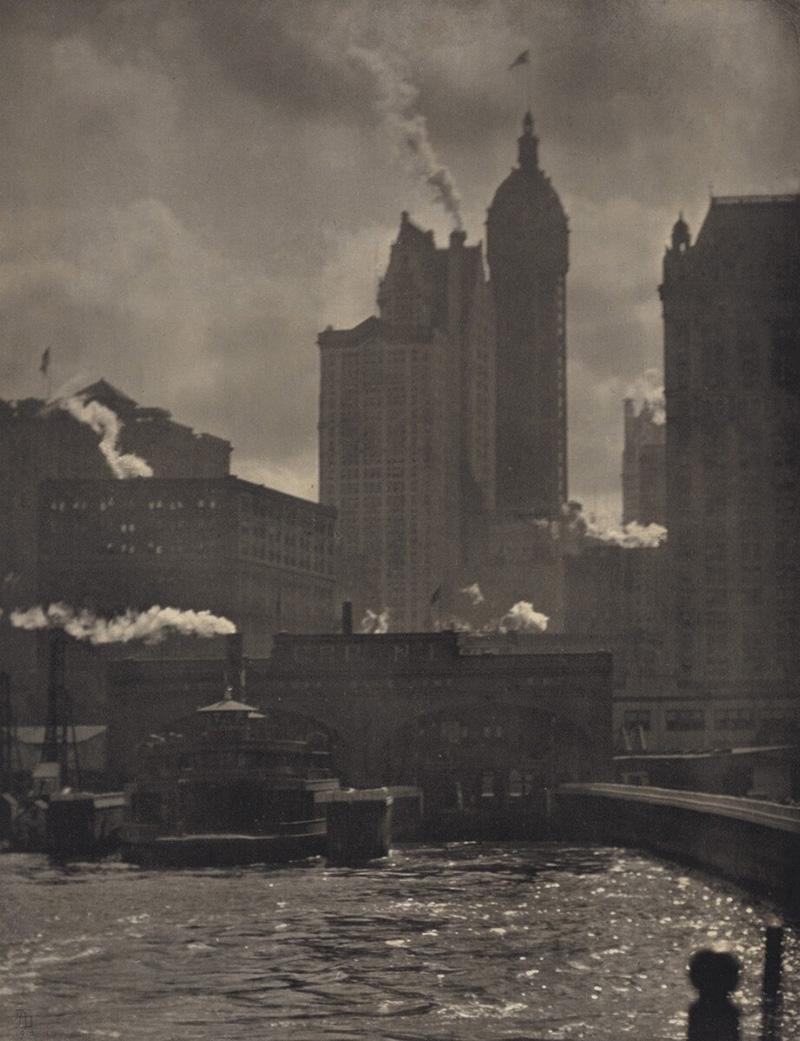After 1910, Stieglitz turned his photographic attention to making portraits of his circle of artists and colleagues. He made his gallery, 291, his informal portrait studio, reinforcing its primacy as the epicenter of modern art. The soft focus and brooding lighting of his first portraits (Key Set number 369) gave way to a more direct style by 1913, when he started posing sitters in front of works of art—often, if they were artists, their own (Key Set number 384). In these complex, multilayered portraits, Stieglitz expressed his understanding of a subject’s personality by linking sitter, setting, and formal elements; a portrait of Francis Picabia, for instance, rhymes an archlike shape in the painting with the painter’s brow and hunched shoulders, and the back of the chair on which he sits (Key Set number 403).
In 1915 and 1916, Stieglitz made a series of photographs out of 291’s back window that marked a turning point in his understanding of modernist photography (Key Set number 417). Unlike his earlier vistas of the city’s iconic sites and structures, these humble views lacked any obvious drama. But Stieglitz explored this cityscape not for its subject matter, but to study form—much as Picasso had done with his cubist studies of the Spanish village of Horta. With their compressed space, simplified geometric forms, and stacked and tilted planes, these photographs embody Stieglitz’s conscious translation of cubism to photography.




